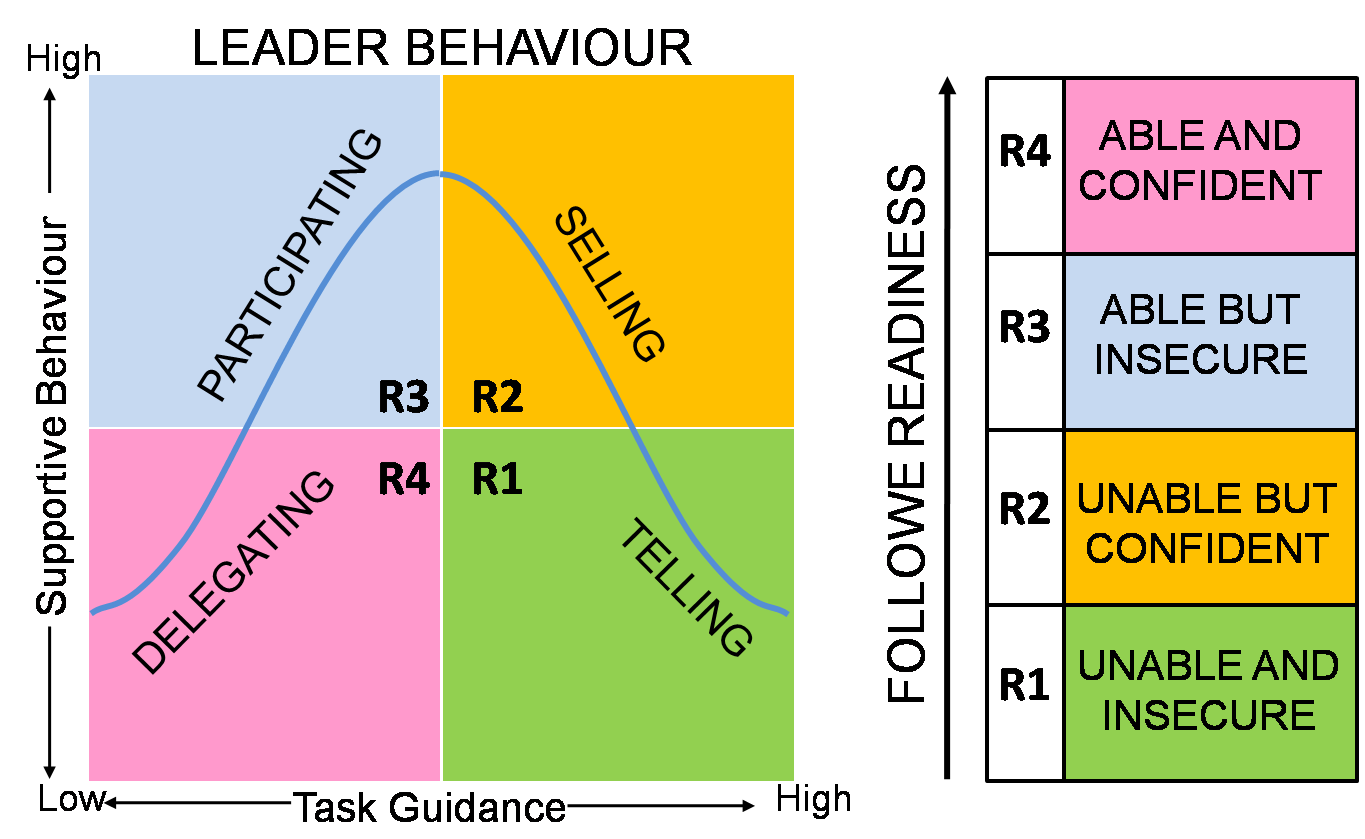
A Lesson in Smart Team Management: Flexibility Ensures Success
Francesco Marcatto1 Mar 19
Table of contents
Self-Sufficiency is something that every team leader wants from their team. Being able to handle a task without the need to double or triple check if they are doing it right, can not only make the process of project management less stressful but also speed up the progress of your project.
However, many team leaders do not understand how to cultivate self-sufficiency within their team members. In this guide, we’ll see how to apply the Hershey and Blanchard situational leadership model in order to adapt your leadership skills and motivate self-sufficiency.
The Situational Leadership Model
According to the situational leadership model, there is no single optimal leadership style. The smart manager, instead, should be able to adjust their styles based on the readiness level of their team members. This means that managers should adopt different levels of emphasis on task guidance and supportive behaviour with the people they are leading, depending on the different stages where a person is within the understanding of a project
The four readiness levels identified by the model are represented in the Quadrant of Readiness below, along with their four associated leadership styles.

Readiness Level 1 – Telling
Within the first quadrant (R1) – the team member is still not sure of what needs to be done, how it needs to be done and why it needs to be done. In essence, you can imagine a complete newbie joining your team.
What you need to do as a team leader is to explain in detail the scope of their role within the project. This phase requires a ‘hands on’ approach. You will need to double check their progress, motivate them when they run into roadblocks, help them find solutions to the problems, and so forth.
For this phase, Short Interval Control is the best approach. You’ll establish several short term objectives and check in on the team member as they cross every milestone.
Over time, the team member will become comfortable with the metrics and will start to become more self-sufficient.
Readiness Level 2 – Selling
Once you notice that your team member is getting the hang of the objectives, it is time to adjust your leadership style once more. In this phase of the Quadrant of Readiness (R2), you’ll no longer be telling them what to do, since they already know the basic gist of things.
Now, you’ll become more of a ‘motivational speaker’. You’ll be selling them on the concept of why it matters, what it means to them if they achieve their objectives, and so forth.
This is about helping the team member understand the vision and to make it their own. Nobody will be self-sufficient in your project if they can’t see the value obtained from doing the work. If it’s just a task, then there is no emotional commitment to the success of the project. Your job is to get them emotionally invested in the success of the project.
If you were to continue with the first quadrant approach when your team member reaches this point of readiness, they might feel that you don’t trust them or that they don’t add value to the project. It’s always important to adjust your leadership style based on the readiness of your team.
Readiness Level 3 – Participating
Once your team member reaches this stage of readiness (R3), they are now able to do what is required and might be somewhat emotionally involved, however they haven’t ‘made the project their own’. Here, you will once more change your leadership style to motivate them to take the next step.
The participation phase means that their input is valuable. “How would you go about achieving this?” is something that you would ask your team member in this phase. Once more, you’re trying to get them emotionally invested in the success of the project by allowing them to incorporate their ideas, as long as it allows to move closer to the goal.
When they see their ideas being implemented, they become more emotionally invested and can finally move towards the final stage.
Readiness level 4 – Delegating
Once your team members reach the final stage of readiness (R4), they no longer need to be guided. You can let them do what they do best. You have ensured that they know what to do and how to do it. They are emotionally invested in the success of the project and have become fully self-sufficient. This leadership style empowers team members to make their own decisions using their skills and expertise.
It takes time to prepare your team members, however, it’s well worth it. Once your team members reach this level of readiness, your team will be working like a well-oiled machine.
Looking for a tool that will make you more productive when managing your projects? And you also want it to be powerful and easy? We developed the right tool for you: it’s called Mindiply Timeline
You can sign up for a 30-day free trial here!







